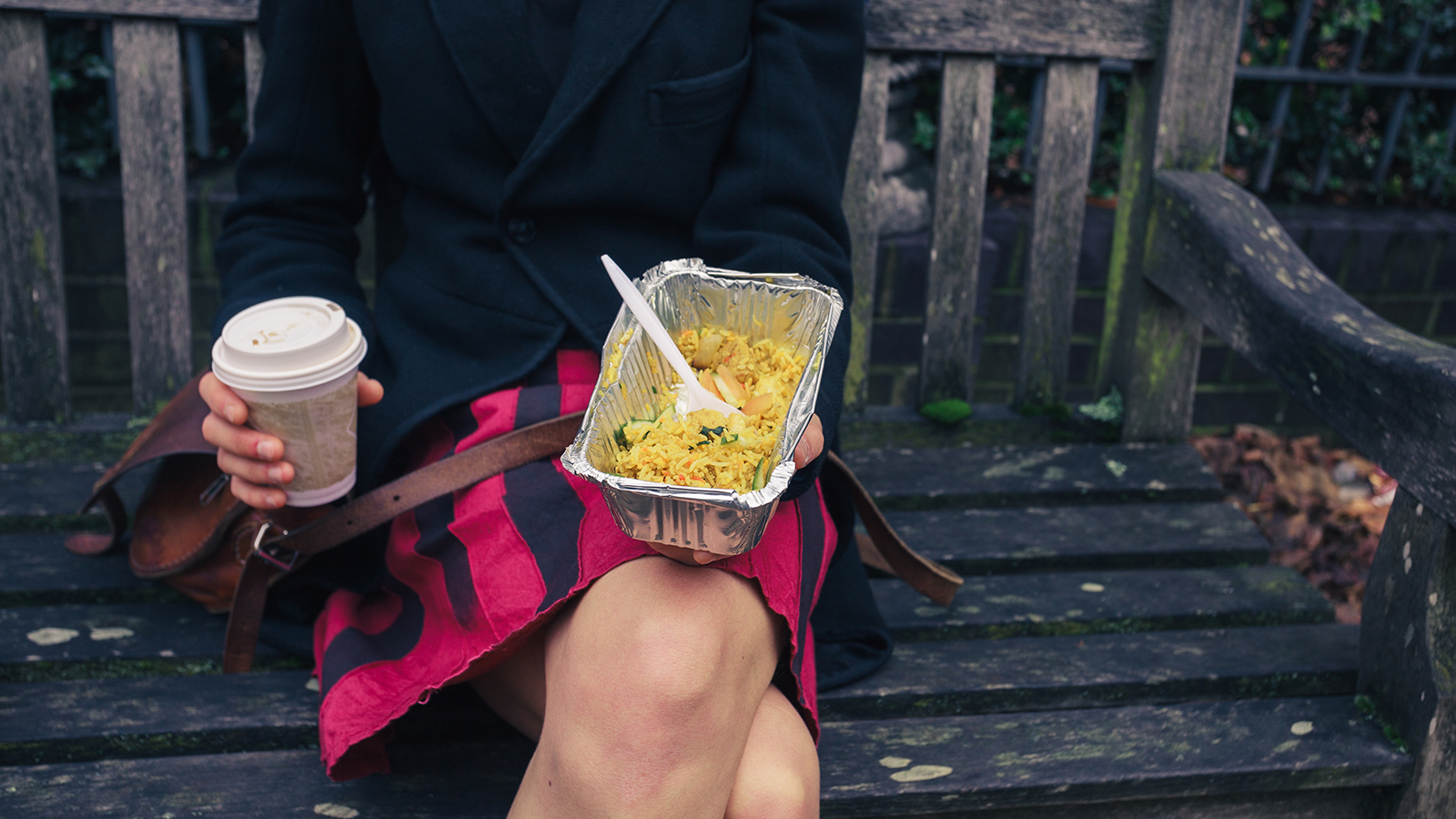Q. Dear Umbra,
I’m developing an eco-friendly restaurant and was excited to find gorgeous compostable fallen-palm leaf plates, but it turns out they aren’t commercially or residentially compostable (only pizza boxes are allowed). I’m thinking a reusable program would be a great solution, but the only reusable to-go containers I’ve been able to find are made from polypropylene, and it’s pretty expensive. What is the most eco-friendly solution to to-go?
Meghan G.
Portland
A. Dearest Meghan,
A piping-hot plate of to-go Thai Panang curry after a long, hard day: fabulous. The throwaway container the dish all too often comes packed in: not so fabulous. Ever seen the garbage cans in a college neighborhood overflowing with sauce-splattered plastic clamshells and Styrofoam tubs? I remember those days well, and it isn’t pretty.
So high-five to you, Meghan, for your desire to eliminate this single-use scourge from your restaurant. Actually, double high-five to you for developing an eco-friendly restaurant in the first place. We need all the eco-friendly restaurateurs we can get, and I shall do my best to help you with this disposal dilemma.
Whether they’re made from foam, foil, or (plastic-coated) paper, disposable takeout containers represent a huge waste of resources on the front end — there’s quite a lot of energy, water, and raw materials involved in producing them, and transportation costs in shipping them — and a landfill-clogging mess on the back end. True, some takeout containers can be recycled or composted (in commercial facilities, in cities that allow them, anyway). But most of the environmental impact of a disposable fork, bowl, or box happens in the production phase, not the end-of-life part. And even when customers are well meaning, they can mess up on disposal, causing problems down at the recycling facility. So I think you’re right on in leaning toward a reusable solution.
Perhaps the very best idea would be to encourage customers to BYO to-go boxes. That way, your eatery wouldn’t have to shell out for its own reusable containers, or deal with collecting and washing them when the last delectable bite is gone. True, it might take time for most diners to get in the habit of toting our own Tupperware for takeout or leftovers, but maybe a healthy discount for those who do remember would help.
Unfortunately, that solution might run afoul of health codes. Some communities prohibit this exact step for fear of spreading disease, and I admit I can see their point: Imagine someone’s salmonella-tinged reusable container coming in contact with a restaurant’s serving spoon. Aside: The FDA says we can schlep our own reusable coffee mugs around because they can be refilled with a “contamination-free transfer process,” which I assume translates to “pouring.”
If you’d still like to pursue this route, Meghan, definitely check your local health codes carefully. Maybe restaurateurs everywhere can implement a careful no-germ strategy by sanitizing serving utensils after every use? Or perhaps the BYO option can apply only to packing one’s own leftovers? I’m no epidemiologist, but I’m optimistic there’s a way we can bring reusables to the table without serving up a free side of Norovirus.
There is another interesting option for reusable takeout boxes that’s just beginning to catch on. And if you’re in the Oregon version of Portland, it just so happens to have caught on right in your town. It’s a third-party company called GO Box that supplies reusable containers made of #5 polypropylene plastic to participating restaurants, maintains drop-off sites for the empty boxes, washes and sanitizes the dirties, and delivers them right back to you. (It’s similar to programs found on college campuses across the country.) Ta da: grub tubs that can be reused up to 500 times, all nice and legal and bacteria-free. You said you were worried about the cost of an option like this, but there might be a loophole: Intriguingly, the customers pay to be a part of this program, not you owner/chefs. (That said, some restaurants are offering freebies as incentives to sign up.) This program is just beginning to expand, so I encourage you entrepreneurs across America to look into bringing it to your own hometowns.
And if reusable to-go boxes just won’t fly? You might try compostable containers made of PLA corn plastic. They’re not entirely without controversy, but they are plant-based, and they do break down under the right conditions — but you’ll need access to commercial composting facilities for this to work. Bagasse, made from sugarcane fibers, is another option, and one that supposedly will break down in a home compost pile. I wasn’t familiar with the fallen-palm leaf option you mentioned, Meghan, but their manufacturers claim they’re backyard compostable — is your restaurant on a big lot? In all seriousness, this option may be worth looking into for others whose commercial composting rules might be different from yours. And then there are containers made from recycled plastic. No, we don’t love plastic, but providing a market for the recycled stuff is important — go with the highest percentage of post-consumer recycled content you can.
Finally, best of luck on your restaurant! If you put as much care into the menu as you have into this takeout issue, I’m certain you’ll be a smashing success.
Dinner-in-my-PJs-edly,
Umbra



